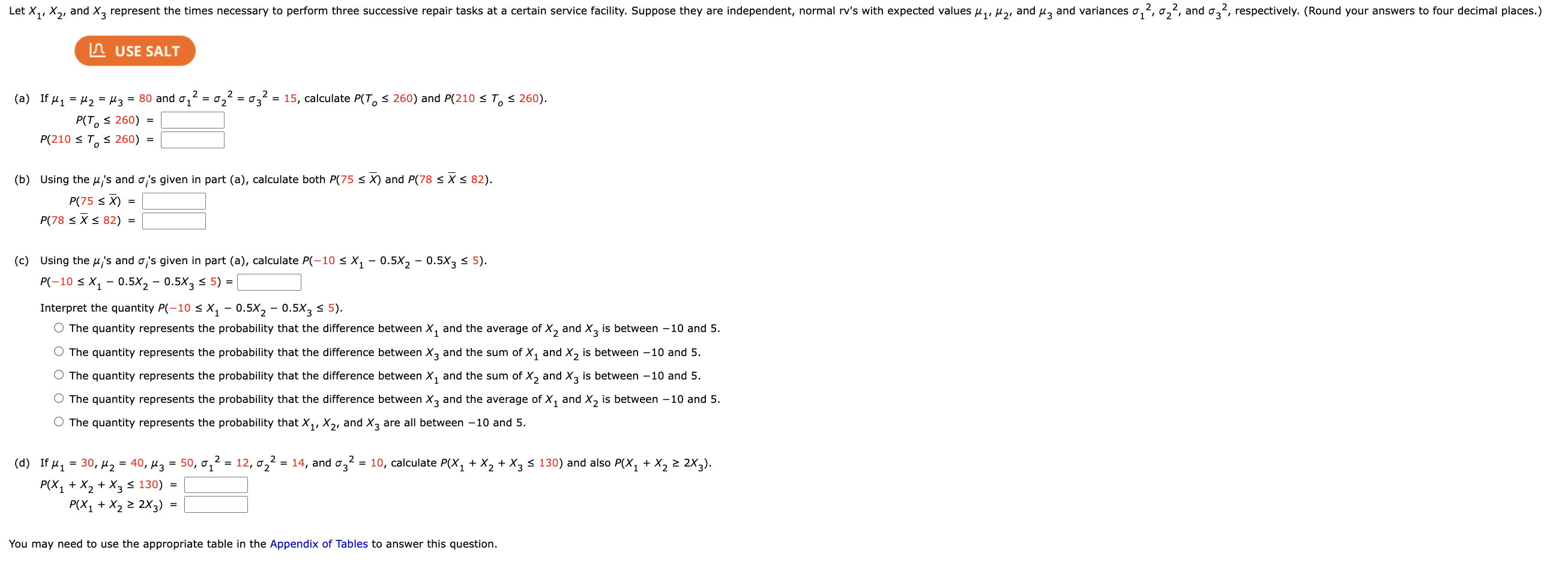Home /
Expert Answers /
Statistics and Probability /
a-if1-2-3-80and12-22-32-15-calculatep-to260-and-pa650
(Solved): (a) If1=2=3=80and12=22=32=15,calculateP(To260)and ...

(a) (b) Using the 's and 's given in part (a), calculate both and . (c) Using the 's and 's given in part (a), calculate . Interpret the quantity . The quantity represents the probability that the difference between and the average of and is between -10 and 5 . The quantity represents the probability that the difference between and the sum of and is between -10 and 5 . The quantity represents the probability that the difference between and the sum of and is between -10 and 5 . The quantity represents the probability that the difference between and the average of and is between -10 and 5 . The quantity represents the probability that , and are all between -10 and 5 . (d) You may need to use the appropriate table in the Appendix of Tables to answer this question.
Expert Answer
(a) Given data, = 240 = 6.7082(i) ...